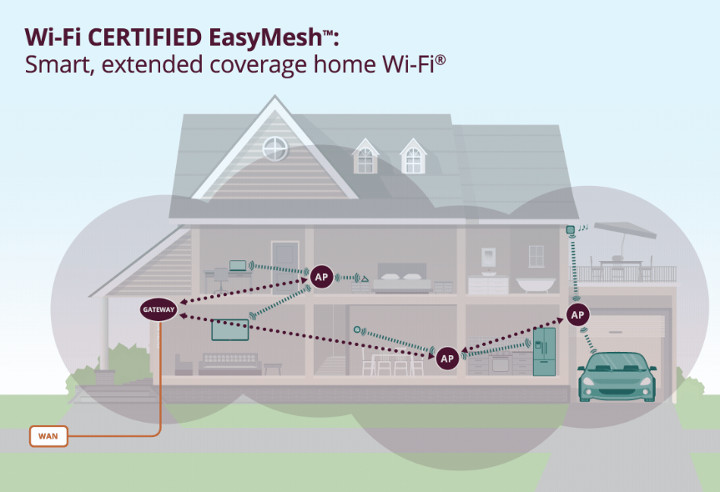It’s been possible for add multiple WiFi routers and/or WiFi repeaters in order to provide good coverage in a house / building for years, so this required some manual configuration. So in recent years, companies came up with WiFi mesh networking solutions that do very much the same, but are easier to setup, and – as I understand it – mostly plug-and-play.
Some examples are Google WiFi router or eeRo Pro WiFi system, but apparently so far every company would do their own proprietary WiFi mesh implementation, so you would not be able to mix brands for such features. That’s why the WiFi Alliance worked on, and now announced Wi-Fi EasyMesh, an industry standard for “simple to use, self-organizing, smart Wi-Fi networks”.
 Key benefits listed by the organization:
Key benefits listed by the organization:
- Flexible design – Allows for best placement of multiple APs providing extended coverage
- Easy setup – Delivers automatic device on-boarding and configuration
- Network intelligence – Self-organizing and self-optimizing network collects information and responds to network conditions to maximize performance
- Effective load balancing – Guides devices to roam to the best connection and avoid interference
- Scalability – Enables addition of Wi-Fi EasyMesh APs from multiple vendors
The last line is the key point, as that means you’ll be able to buy any WiFi EasyMesh certified router to extend to your home / small office network, provided your existing router is also compatible with EasyMesh.
We’ll have to see how enthusiastic router manufacturers will be with this new standard, as Liliputing points out that most testimonies in the press release are from silicon vendors such as Broadcom, Intel, Marvell, Mediatek, and Qualcomm, as well as some lesser known router manufacturers. If they are willing, Google, Asus, eeRo, and other companies with WiFi mesh routers could still implement the new EasyMesh standard, while keeping their proprietary implementation for backward compatibilities with their older devices.
More details can be found on WiFi Alliance website, or for technical details, you may refer to Wi-Fi Alliance Multi-AP Technical Specification currently in draft form.

Jean-Luc started CNX Software in 2010 as a part-time endeavor, before quitting his job as a software engineering manager, and starting to write daily news, and reviews full time later in 2011.
Support CNX Software! Donate via cryptocurrencies, become a Patron on Patreon, or purchase goods on Amazon or Aliexpress




